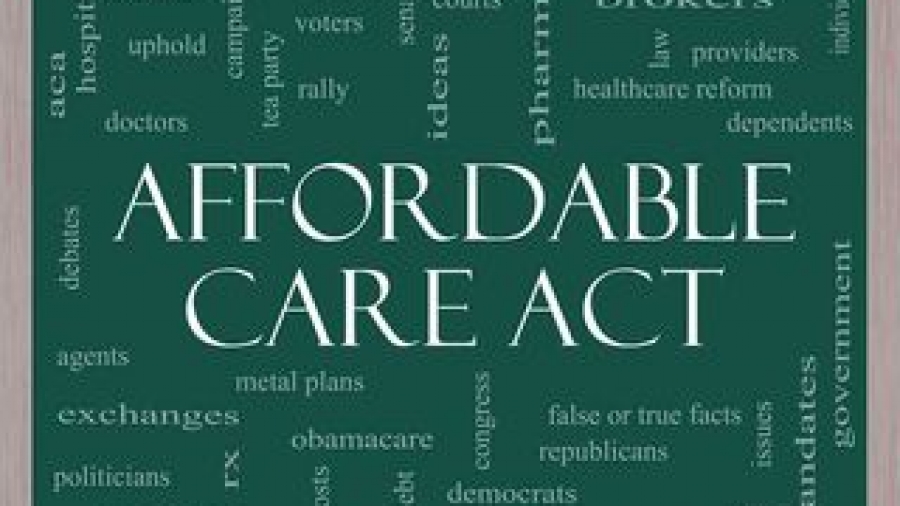This post continues our Medicaid planning series with a deep dive into MMMNA, or the minimum monthly maintenance needs allowance, which is the minimum income allowance for the community (or well) spouse in a Medicaid claim. We've already covered some of the basics of determining MMMNA for your clients; If you didn't see the previous posts, click on the links to find numbers One, Two, Three and Four.
 So, similar to the rules we covered on the individual income allowances, there’s also the asset test. Unlike the income allowances where you’re allowed $60 a month or $80 a month, under the asset test you’re allowed a certain amount of assets. The minimum is $1,500; by federal law they cannot allow you less than $1,500 of assets per month. About 80% of the states go beyond that, allowing $2,000 per month. And in a few states it's even higher. One day New York sent out a notice saying the state was increasing the individual resource allowance to $14,400, which was a windfall for our clients. There are also some states at $5,000 or other amounts, and about a dozen other states are at the $1,500 minimum.
So, similar to the rules we covered on the individual income allowances, there’s also the asset test. Unlike the income allowances where you’re allowed $60 a month or $80 a month, under the asset test you’re allowed a certain amount of assets. The minimum is $1,500; by federal law they cannot allow you less than $1,500 of assets per month. About 80% of the states go beyond that, allowing $2,000 per month. And in a few states it's even higher. One day New York sent out a notice saying the state was increasing the individual resource allowance to $14,400, which was a windfall for our clients. There are also some states at $5,000 or other amounts, and about a dozen other states are at the $1,500 minimum.
When you see a state that has a $1,500 resource allowance, then you know it's a 239B state. What does that mean? Back in the '70s there was a code section 239B that raised the allowance from $1,500 to $2,000 federally. But some states complained, so under 239B of the statute they allowed the states to opt out of the increase. Remember, federal Medicaid laws allow the states to be less restrictive but not more restrictive. So you would think if a state allows a $1,500 resource allowance when the federal minimum is $2,000, such a state would run afoul of that standard. And you would be correct, unless that state filed an election under section 239B to maintain the $1,500 minimum resource allowance. So if your state’s minimum resource allowance is $1,500, you are a 239B state. It's a term worth knowing because you might hear it at CLEs and events of that nature.
So what about the community spouse? We know the individual can only have $1,500 to $14,400, depending on which state you’re in. The federal government addressed the community spouse question with the 1988 Medicare Catastrophic Coverage Act. The MCCA, attempting to avoid impoverishing community spouses, set a new federal minimum amount that a community spouse has to be allowed to keep. And what is that amount? Much like the federal government did with income limits, it set a minimum maximum and a maximum maximum. And for some reason, the minimum changes every July and the maximum changes every January. Last July the minimum was raised to $23,184, so the states cannot allow a community spouse less than that. If you’re in a max state, then your state will now allow the community spouse $115,920.
And again, similar to the income exercise, if the community spouse’s assets are more than the minimum but less than the maximum, then the community spouse resource allowance (CSRA) will be the amount of the community spouse’s assets. So, for example, if I were to say that a husband had $200,000 of assets and a wife had $10,000 of assets, we would first determine who went into the nursing home. If the husband went into the nursing home, the wife only has $10,000, so she would be able to take $13,184 of the husband’s excess assets and then the rest would have to be used toward his cost of care. If the wife went into the nursing home with her $10,000 of assets and the husband had $200,000, the most that the community spouse could have is $115,920, so the difference between the $115,920 and $200,000 would have to go toward the cost of care.
There are exceptions. We can keep some assets by utilizing some special exemptions. But generally speaking, the rule is very simple. The institutionalized spouse is allowed to have $1,500 to $14,400; the community spouse is allowed a minimum of $23,184 or a maximum of $115,920 if you’re in a range state, and if you’re in a max state the allowance is $115,920.
So now that you've seen how to calculate the CSRA, let's try a few examples. If a couple has $130,000 of total countable assets between the husband and wife at the snap shot date, then how much would the CSRA be? The couple lives in Connecticut, which is a range state. In a range state, how much would the community spouse be allowed to keep? Well, we know that half of $130,000 is $65,000. And according to range state rules, if x is greater than the max, then the CSRA equals the max. If x is less than the minimum, then the CSRA equals the minimum or the assets. If x is greater than the minimum but less than the max, then the CSRA equals x. So in this case, that’s what we would have. Connecticut’s a range state. And because $65,000 is below the maximum of $115,920 but above the minimum of $23,000, then the CSRA in Connecticut would be $65,000.
Now try another example: We’re in Florida, which is a max state. So even though half of the countable assets are $65,000, the CSRA cannot be less than $115,920 in a max state, so that is what the CSRA would be in this example.
How about a case in Kansas where one half of the countable assets come to $8,500? If you're asking yourself whether Kansas is a max state or a range state, well, it really doesn’t matter for this example, does it? The CSRA minimum is $23,184, so the CSRA cannot be more than the amount of assets they have. So in Kansas, which is a range state, the whole $17,000 would be exempt, but the additional $6,184 would also be exempt if that client came into additional assets.
And finally, if I’m in Arizona, which is a max state, I can never have more than the $115,920. So if the couple has $250,000, then half of that still exceeds the max. I can never have less than the minimum or greater than the max. If you’re in the middle, you get the range amount, and in this case you can keep $115,920, because there’s a total of $130,000 assets.
Hopefully these examples help you understand how this works. We will wrap up our MMMNA series with a post on snap shot dates, so check back soon.
 And those clients are turning to Lawyers With Purpose attorneys to help them do it. Lawyers With Purpose can help you quickly get up to speed to effectively and competently work with your clients in the Medicaid area. We provide our members many tools to help them do that. One of those tools is the Medicaid Qualification Worksheet. The Medicaid Qualification Worksheet can help you immediately determine whether or not a client is currently qualified for Medicaid if they go into a nursing home, what you might need to do to help them get qualified if they are not already, and show them that they may not have to wait five years after they do planning with you before they could qualify for the benefit.
And those clients are turning to Lawyers With Purpose attorneys to help them do it. Lawyers With Purpose can help you quickly get up to speed to effectively and competently work with your clients in the Medicaid area. We provide our members many tools to help them do that. One of those tools is the Medicaid Qualification Worksheet. The Medicaid Qualification Worksheet can help you immediately determine whether or not a client is currently qualified for Medicaid if they go into a nursing home, what you might need to do to help them get qualified if they are not already, and show them that they may not have to wait five years after they do planning with you before they could qualify for the benefit. 














